The Opposite of Minimalist in Home Decor & Life
Author: Rick Worst | Editor: Omar Alonso
Review & Research: Jen Worst & Chris Miller
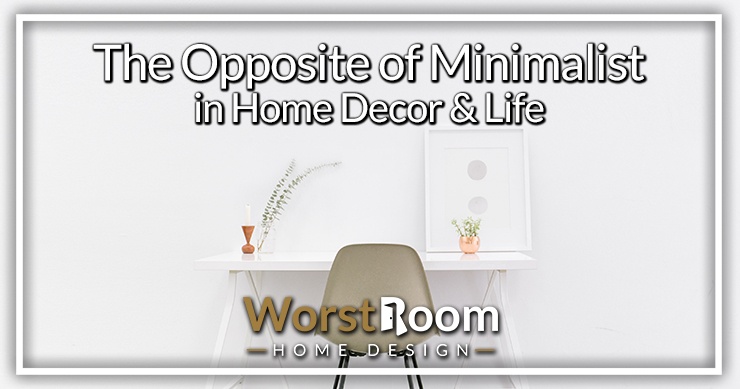
The opposite of minimalist is maximalist. Although minimalism isn’t a new trend, it’s a lifestyle choice that more and more people embrace. Minimalism is a concept that also translates to visual art, music, and other forms of media, but lately, it’s become a way to live with less. It's also a decor style you can use to create the home you're most comfortable in.
Maximalism is also about choices in home design and any other type of design, aesthetics, and lifestyle. Maximalism is the theory that “more is more” and directly conflicts with the philosophy and aesthetics fueling minimalism.
What Does “Less Is More” Mean?
Minimalism in art is a movement that began post-WWII as an expression of using only the essentials of color and shape to demonstrate or execute a vision.
As a lifestyle choice, minimalism strongly emphasizes living with only the bare essentials.
“Less is more” implies that something in a smaller quantity can still be of higher quality. The less is more philosophy also applies to home decoration, art, music, media, speech, lifestyle, or even diet.
A minimalist or maximalist lifestyle isn’t necessarily better than the other. Understanding their vast differences allows individuals to determine which choice is better suited for them.
What Is Minimalism?
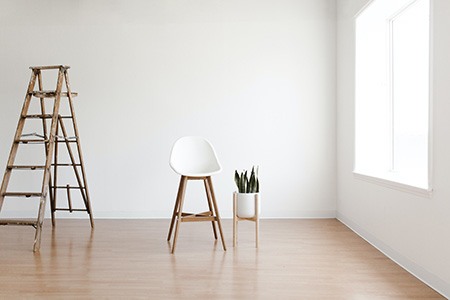
The definition of minimalism is a direct representation of the word itself. Minimalists make a conscientious choice to live with only essential items that bring intentional purpose to their lives and homes. They find any excess materials distracting and instead focus on what they love, need, and use for everyday living.
Minimalists choose quality over having access to variety or quantity. They prefer simplicity and stray away from complexity in all aspects of their lives or where they can avoid it.
For a minimalist, items need to serve an intentional function or purpose. They avoid frivolity crowding their space, homes, and life.
Opposites of minimalism include these four terms:
- Maximalism
- Hoarding
- Cluttercore
- Materialism
Minimalism isn’t a reflection of being poor, but it lies in strong conflict with cluttercore which is a relatively new decorating trend with a deep focus on celebrating chaos and abundance.
History of Maximalism
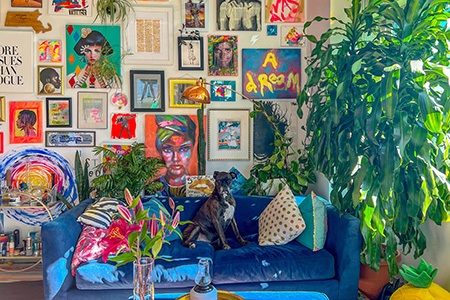
Maximalism is the opposite of minimalism. Maximalism expresses elaborate detail, abundance, or showy attributes. Many see maximalism as a show of wealth and luxury and believe in the philosophy that more is more. This attitude is in direct contrast with minimalism.
Looking through history, kings and queens may very well be the epitome of maximalism. Post-WWII saw a huge influx of inventions and the birth of materialism.
Maximalism is also reflected in art and is strongly associated with postmodern novels where embellishment and digression contribute to the exposition within the text. Maximalism translates into home design with striking color combinations and garish and extravagant objects meant to represent the owner's character.
Luxury brands also represent maximalism, the minimalist opposite, by making a statement for others to desire, envy, and covet such articles of lavishness.
While maximalism thrives on excess and clutter through visually exploiting colors and textures, minimalism in art, home design, or mentality mimics a zen-like tranquility that brings a certain meaning or purpose to one’s life.
Both concepts speak to individuals for underlying reasons of self-worth and what they hope to project into the outside world in an attempt to manage other's perceptions of themselves. But in both cases, they're a product of modernity. Modern kitchen design, as an example, can range between minimalism, maximalism, and everything in between with specific themes, similar to cluttercore's goals (as discussed below).
Differences Between Maximalism & Minimalism
A person with materialistic tendencies values the importance of material possessions above everything else. Materialists collect possessions as a means of attaining personal happiness and fulfillment. Their philosophy means that the more they possess and collect (a form of maximalism), the happier they will feel.
Materialism is often a trade-off for spiritual, societal, and environmental values. Research suggests that while materialists seek happiness by obtaining more possessions, frequently, they’re unhappy with life and have low self-esteem.
People caught in the rat race of materialism and maximalism tend to suffer from anxiety. Accumulated debt, uncontrollable spending, and poor relationships contribute to the stress of never having enough and competing with everyone in a constant state of envy.
What Is Cluttercore?
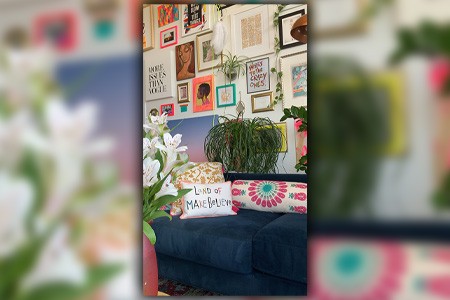
Chances are everyone has experienced cluttercore when visiting friends or family. This newly trending design style is a hit on social media at the moment. It's an opposite of minimalist design, for sure.
Cluttercore fanatics joke that their style is the “threshold of hell” for minimalists. Cluttercore is an offshoot of maximalism blended with materialism and linked to the Victorian decorating era.
Instagram and TikTok represent two major hubs that support the cluttecore lifestyle. It tends to appeal to younger generations for its vibrant organic appeal.
Cluttercore design builds on layers of anime, household plants, and organics like mushrooms and fairies, all accented with subdued hues in pastel.
Fans of cluttercore care less about building harmony in their living space and instead concentrate on surrounding themselves with trinkets that speak to their ideology. Quality has no bearing on cluttercore, yet overwhelming quantity dominates the feeling in every room.
To the novice, cluttercore might look like hoarding. Cluttercore fans build collections of often unorganized but symbolic treasures displayed in random patterns. So what is the opposite of minimalist? In trendy terms, that would be cluttercore.
The Truth Behind Hoarding
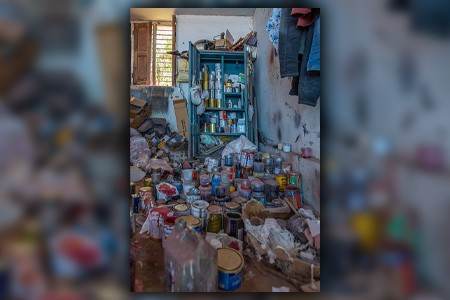
Just as minimalists become compelled to reduce possessions, hoarders amass. Hoarding is an obsessive-compulsive disorder on the rise in the USA. Experts suggest that an estimated 19 million Americans suffer from hoarding.
Many people now use the term "hoarding" in their daily life in a more colloquial fashion to describe a messy amount of material belongings, mostly unrelated to the clinical definition.
Hoarders have an internal psychological need to collect clutter. This clutter can be practical items that they retrieve from junk sites, thrift stores, family heirlooms, or actual trash like food litter, newspapers, and any item that other people would toss in the trash.
Hoarding is a debilitating cycle that robs families of living healthy and productive lives. While many people cling to mementos for sentimental value, hoarders don’t make rational distinctions.
Minimalism and hoarding are not opposing lifestyles. Instead, hoarding is a debilitating mental disorder, while minimalism is an intentional lifestyle choice based on a philosophy to enhance life experiences.
Benefits of Becoming a Minimalist
Minimalism is sometimes known as a countercultural revolution, which is a statement that isn’t entirely true. Many minimalists make this lifestyle choice to leave a smaller footprint, and nothing is more pro-culture than contributing to the environment positively.
Minimalists typically:
- Spend less
- Experience less stress
- Enjoy the freedom to come and go
- Spend less time cleaning
- Have a positive effect on the environment
- Can be more productive
- Leave a healthy legacy for their children
- Are more content
- Own higher quality items
- Have more time
- Don’t compete in the comparison game
- Live in smaller spaces
Minimalism isn’t new. Some claim that minimalism is a 1960s movement, but that isn’t necessarily true. It goes as far back as ancient Chinese philosophies of feng shui, especially in home design and decor. This bedroom feng shui guide is the perfect example of everything having a purpose or being absent altogether.
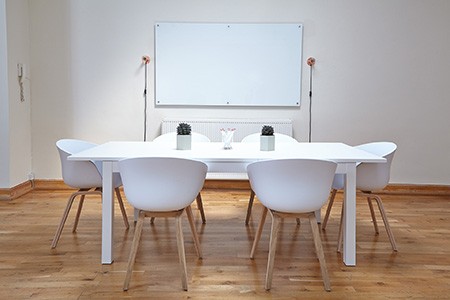
The Japanese Zen movement already used components of minimalism. Zen values have a strong motivation for creating balance through inner freedom, concentrating on the essence of living, and seeking comfort in simplicity.
Even Romans and Greeks lived a minimalist lifestyle. Modern minimalists like Joshua Becker help you understand what matters most in life. “It’s about owning exactly what you need.”
Marie Kondo uses an aspect of minimalism in her KonMari Method, in which the final step to tidying up is to assess every possession and ask yourself if the object still sparks joy within you. If it does, you may keep it. Otherwise it must serve a specific purpose. If it does neither, you must discard it.
Minimalism isn’t a reflection of being poor, although it makes many people uncomfortable to think of living with less. Every minimalist endures questions about their lifestyle choices, often being made to feel inadequate in today’s world of consumerism.
Trying minimalism for a day based on Joshua Becker’s theory isn’t difficult:
- Try to remove one box of clutter
- Clear one surface like a table, shelf, counter, floor, or desk
- Don’t buy anything and contribute the money to your savings
- Enjoy a long walk
- Turn off intrusions from emails and texts
- Eliminate an obligation and reclaim your life
- Spend time with kids in play
- Wear your favorite outfit
- Turn off the TV one hour earlier
- Do one thing you love
Always observe your feelings after each effort and make sure this path is something that is increasing the joy in your life instead of becoming a new source of stress.
The Last Word on the Opposite of Minimalist
Minimalists arrive at this stage of their life philosophy from experiences that shaped and drove them to make choices. When they hear that the best way to make your living room cozy is to avoid minimalism, they scoff or even laugh at the naivety.
Those experiences and preferences that led them to minimalism are unique to each of them. Minimalism and maximalism can also represent extremes. Some minimalists can live with one chair, fork, towel, and sweater, just as maximalists have enough of everything to outfit a small village and start to wonder how to store their sweater collection.
Neither is necessarily right or wrong and the debate is ongoing. Minimalists often claim that making this significant choice has not only changed their lives but also reduced stress and health issues and contributes to their overall well-being.
Many also deeply care about the consequences of consumerism on the environment. A downside to minimalism is that it can make people feel like outsiders. It can lead to a home that feels like a sterile environment with barely any decorations.
Another misinterpretation of minimalism is that people have to live without possessions. Quite the opposite is true. Minimalists choose items or products and associations that have a lasting quality. It's truly simply a matter of "less is more" and leaving space for your home to breathe, if stated in more artistic language.
Maximalism is the opposite of minimalist and represents the norm. Most households work to better their lives with gadgets and whatnot to help with everyday chores. They have to have one in every size and color. Minimalists employ only what is necessary.



